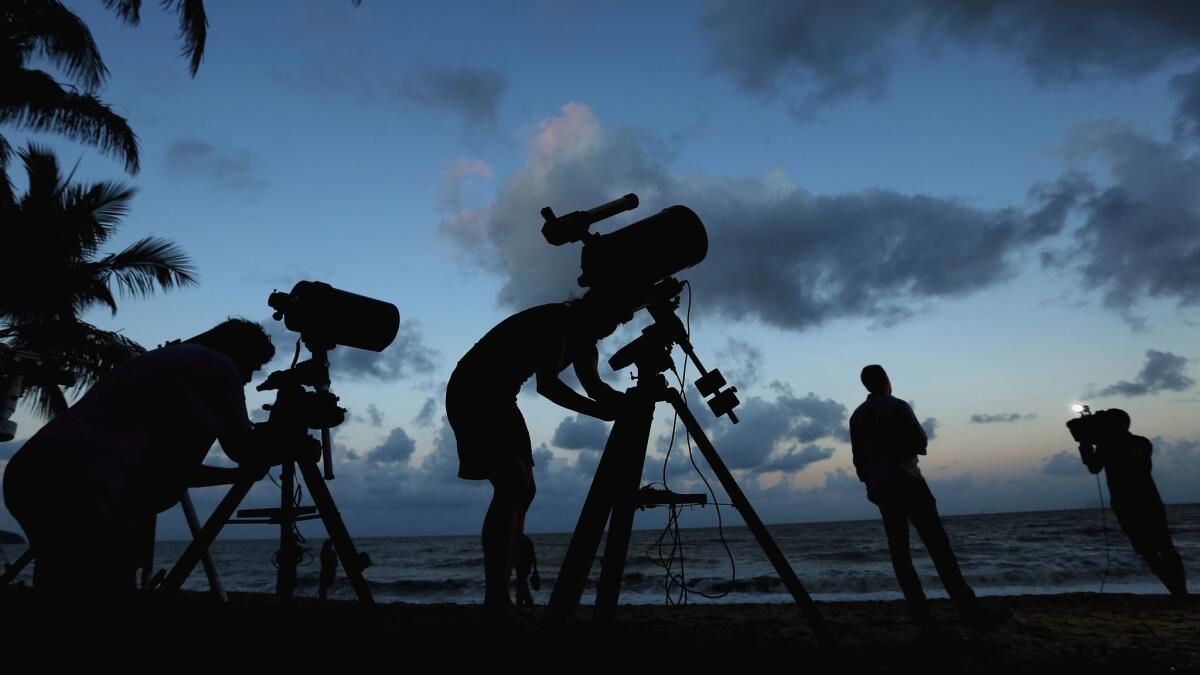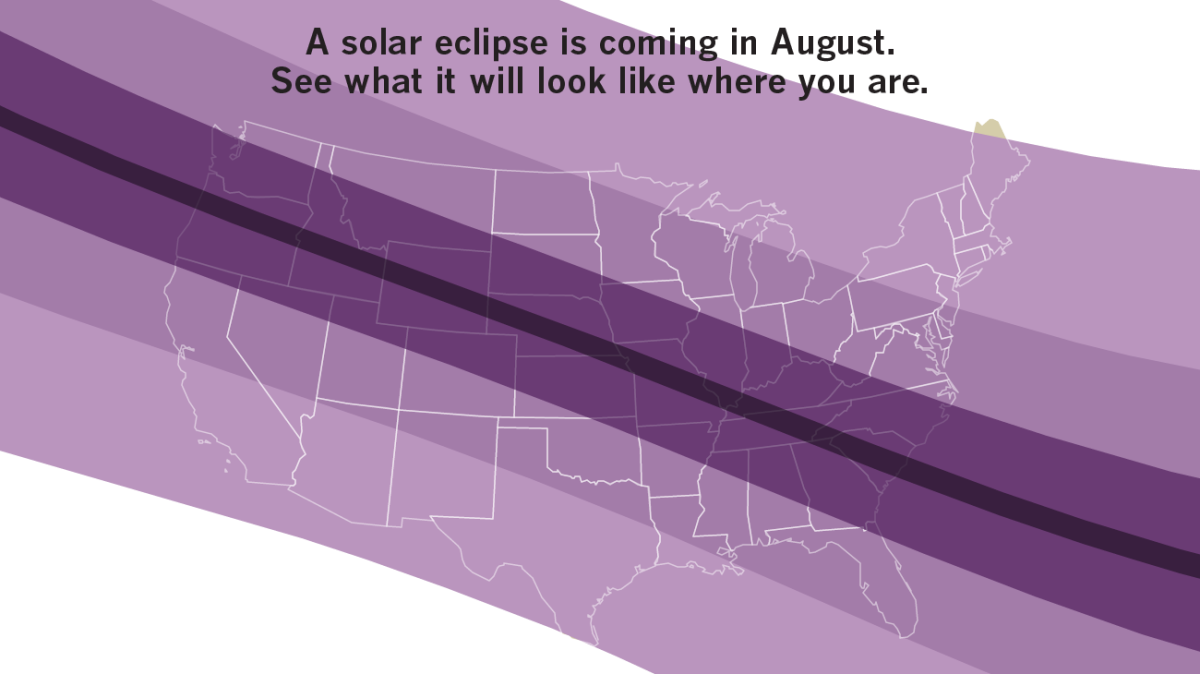Tips for taking the best pictures of the Great American Eclipse

- Share via
The Great American Eclipse is almost here.
On Monday, the Great American Eclipse will span the country from coast to coast for the first time since 1918. The total eclipse will begin at 10:15 a.m. Pacific time in Oregon and end in South Carolina about 90 minutes later. Millions of people are expected to don eclipse glasses and watch as the moon appears to blot out the sun.
People naturally want to commemorate this historic event. If you're planning to photograph the eclipse, here are some tips and guidelines from the experts.
For casual photographers
The big question most people want to know: Will I be able to get a good photo of it with my phone?
The answer: Not really.
Grant Collier has been a professional photographer for more than 20 years. He's the author of "Collier's Guide to Night Photography" and puts out the annual "Starry Nights Wall Calendar." He recently published a Q&A about eclipse photography on his website for people with digital single-lens reflex cameras and long telephoto lenses.
Collier said you can get a halfway decent shot with a phone camera, but it's tough to pull off. The same goes for a point-and-shoot digital camera, he added.
Alan Dyer seconded that notion. Dyer is the author of a 290-page e-book called “How to Photograph the Solar Eclipse.”
There are some add-ons you can buy for your phone that could enhance eclipse photographs, but if you're going to that much trouble and expense, you might as well rent a proper camera, Collier said.
Both photographers said that if your iPhone is your only equipment, use it to take a few quick commemorative shots, then put it aside and just enjoy the eclipse. Don’t bother using the flash (it won’t help), and make sure you give the camera a little extra time to focus before you snap a photo.
Alternatively, consider taking photos of other things happening during the eclipse. Photos of how people (and animals) around you are reacting will be more compelling than a blurry photo of the sky. There will also be interesting light on the horizon that can be captured with a phone camera, and you can certainly take a photo of the crescent-shaped sun projected through a pinhole camera.
One more idea: Put your phone or digital camera on a tripod and take video of you and your group reacting during the eclipse. Dyer said you might be surprised to see how people react in the moment to seeing such an unusual celestial event. At the very least, plan to get a group photo during the eclipse.
For serious photographers
People who are more serious about photography will have a DSLR.
If you have a DSLR but don’t have a telephoto lens, Dyer said your best bet is to set up a wide-angle shot on a tripod. Manually focus the camera on the sky and then put it on auto exposure. Use an ISO on the lower end — 100, 200 or 400 — and open the lens wide.
He said one idea is to mount the camera on a tripod and set up a timer. Have the camera take one photo per second about 5 minutes before the eclipse reaches totality and let it run until about 5 minutes after the total eclipse ends. Make sure you’ve got a memory card that can hold that many photos.
This approach has a lot of advantages: You’re guaranteed to have at least one good shot, you can turn all the photos into a time-lapse video, and most importantly, you won’t be fiddling with your camera during the eclipse itself.

The most advanced way to photograph an eclipse is with a 300-millimeter telephoto lens. If you’re going this route, you’ll need a solar filter to protect your camera's sensor before and after totality, the point at which the sun is completely blocked by the moon.
Set your aperture wide — around f5 or f6 — and use ISO 100, Collier recommended. Dyer said f4, f5 or f6 would work, using ISO 100 or 200. Focusing the camera can be a little tricky since the subject is so far away, so practice ahead of time by taking photos of the moon on a night prior to the eclipse.
Vary the shutter speed (Dyer recommended between 1/100 and 1/25; Collier suggested a wider range, from ½ to 1/4000) to get shots with lots of different exposures — a photography technique known as bracketing. That way you can get different photos and decide later which one you like the best. If you’ve used auto-bracketing before, it should work here, but if you haven’t, during the eclipse may not be the best time to try it out.
When totality begins, you’ll need to remove the solar filter from your lens. Make sure you put it back on as soon as totality ends to protect your equipment from the sun’s rays. If you aren’t along the path of the total eclipse, leave the filter on the entire time.
Overall, both photographers emphasized that if you’ve never seen a total eclipse before, set photography aside and just enjoy it. You’ll have another shot when a total eclipse crosses over the United States in April 2024.
Follow me on Twitter @jessica_roy and "like" Los Angeles Times Science & Health on Facebook.
MORE IN ON THE GREAT AMERICAN ECLIPSE
These eclipse addicts go to great lengths, again and again, to stand in awe of the heavens
Will the Great American Eclipse make animals act strangely? Science says yes




